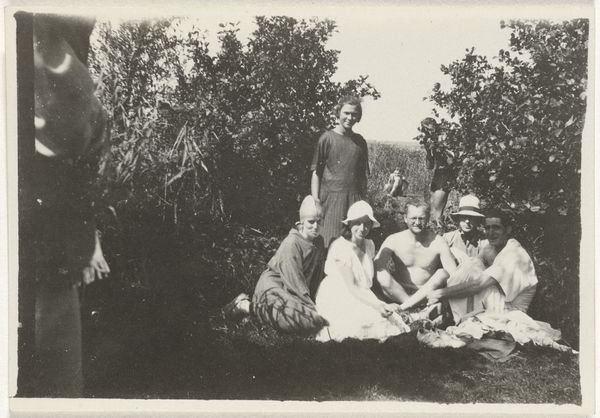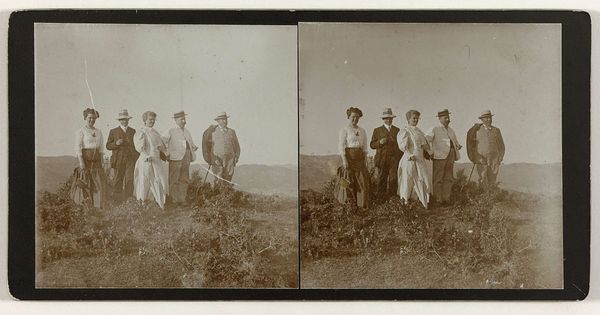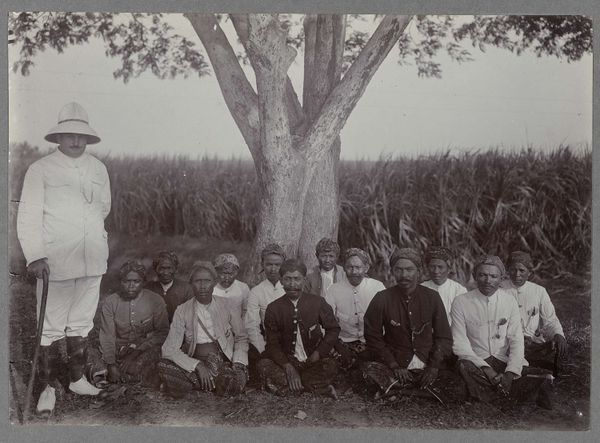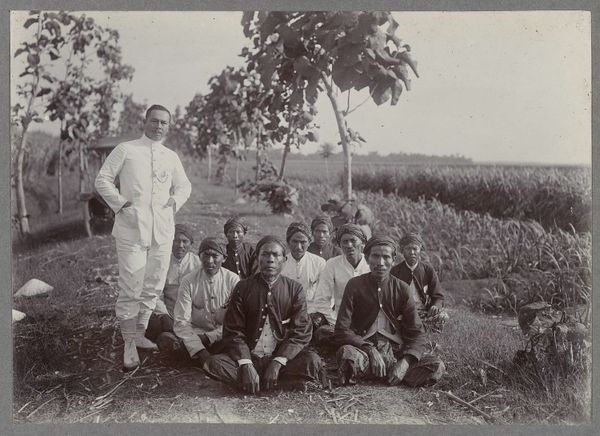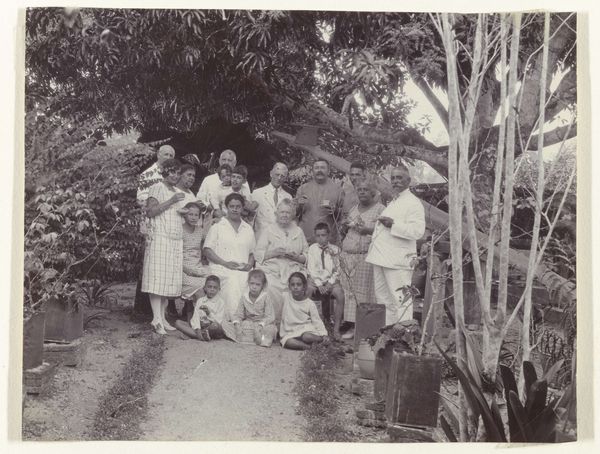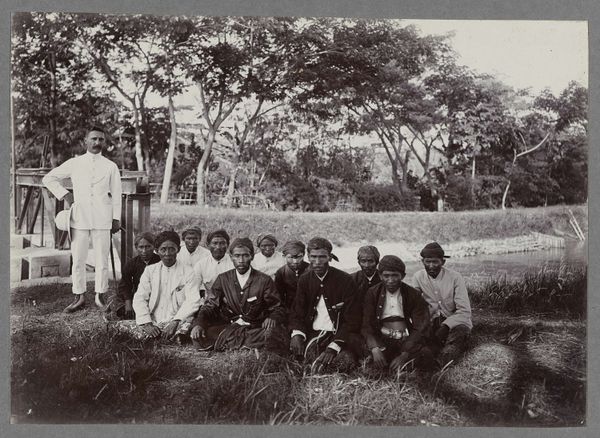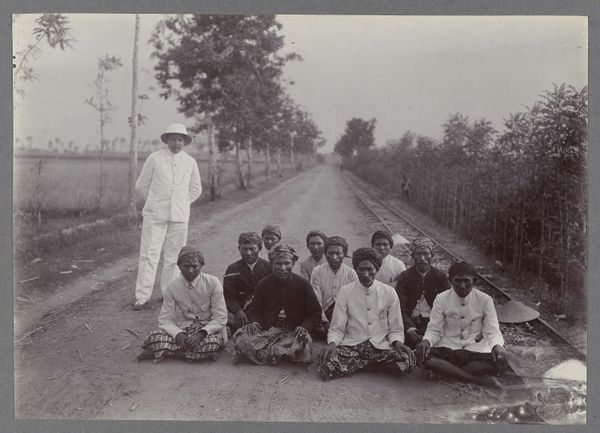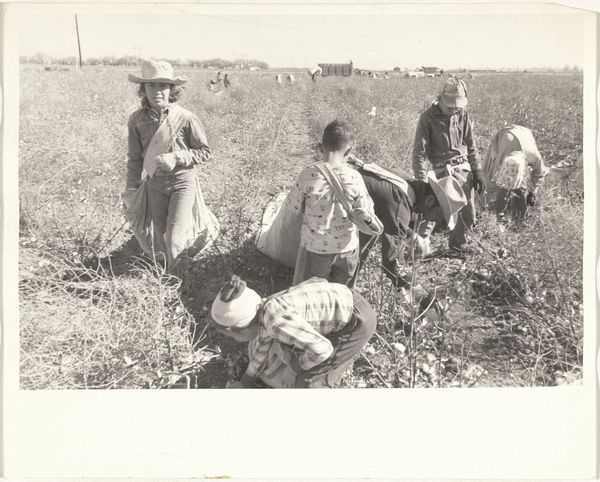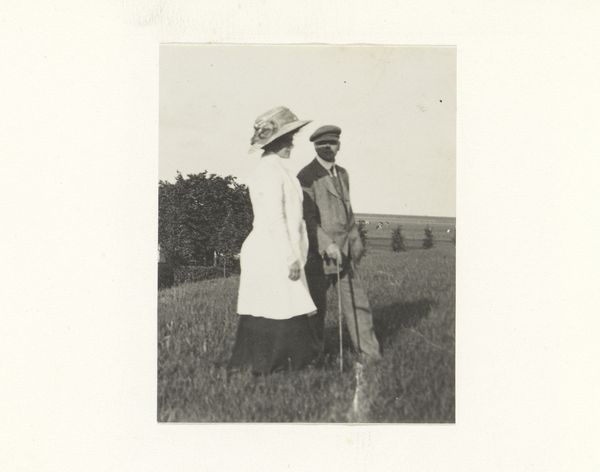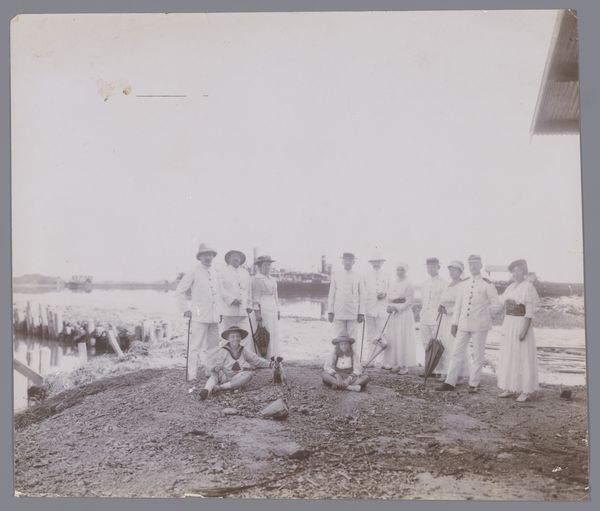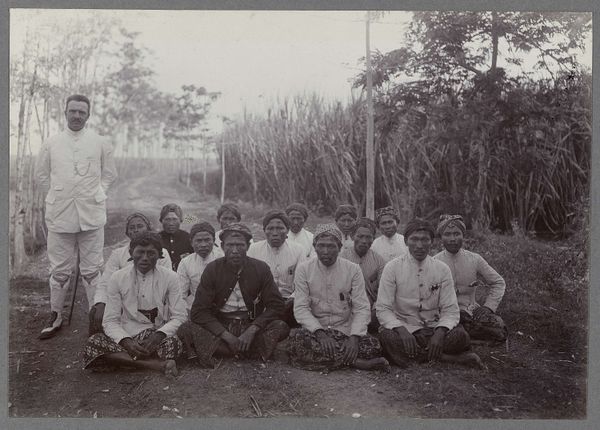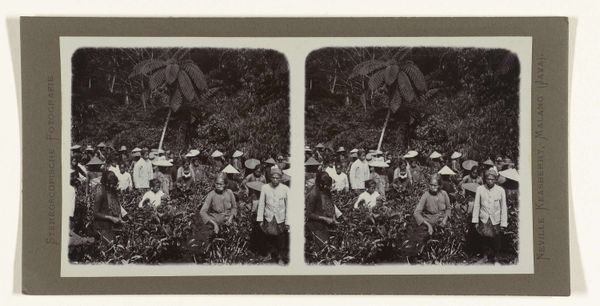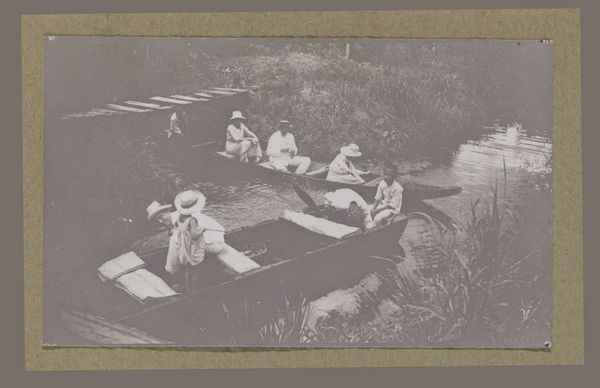
Gezelschap bij de rivier op het terrein van plantage Accaribo 1931
0:00
0:00
photography, gelatin-silver-print
#
portrait
#
photography
#
group-portraits
#
gelatin-silver-print
#
genre-painting
#
realism
Dimensions: height 59 mm, width 89 mm
Copyright: Rijks Museum: Open Domain
Editor: This gelatin silver print, "Gezelschap bij de rivier op het terrein van plantage Accaribo" by Theodoor Brouwers from 1931, feels both posed and a little awkward. They’re standing on what looks like a makeshift platform near the water, but what strikes me is how the materiality of this photographic print evokes its social context. What can you tell me about how the process shapes the message? Curator: It’s interesting that you immediately picked up on the "makeshift" nature of the platform. From a materialist perspective, the construction, or rather, the *making* of this image becomes central. Look closely. What’s supporting that platform? Is it built with precision, or is it more practical and functional? Who likely constructed this platform and with what resources readily at hand? Editor: It definitely looks practical. Maybe just lashed together logs? It feels less about aesthetics and more about making do with what they had on hand in that environment. Curator: Exactly. Now, consider the gelatin silver print itself. This wasn't a luxury process at this time, but it was a means of wider image dissemination compared to older processes. The materiality of the photograph reflects accessibility but also the labor involved in photography - the photographer, the developers, the printers. This contrasts with the "high art" we might see celebrated elsewhere. What assumptions can you question here regarding "high art" versus documentation, labor, and material availability? Editor: I guess I hadn't really considered the accessibility aspect of photography, even back then. And I definitely see what you mean about the labour involved and how it sort of flattens that traditional high art versus low art division. It really makes me consider the means of production itself. Curator: Precisely! Thinking about art in terms of material processes and its relation to social production offers a fresh lens for interpretation. It reframes the conversation to include the everyday, the overlooked labor, and the economic conditions shaping art. Editor: I will never look at an old photograph the same way again. Curator: Good, now consider its place within society!
Comments
No comments
Be the first to comment and join the conversation on the ultimate creative platform.
